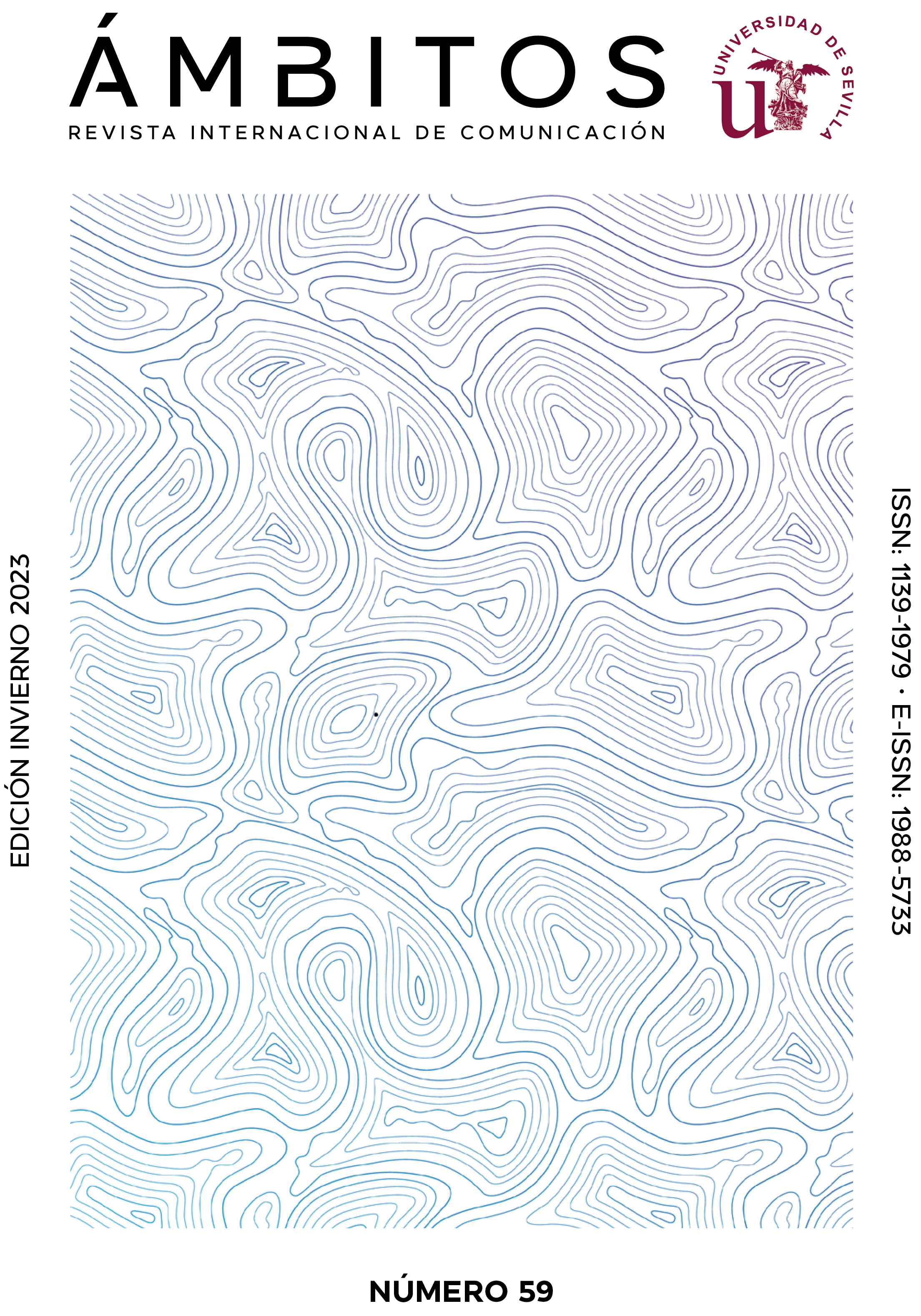The representation of a woman judge in the Italian press. The case of Ilda Boccassini
DOI:
https://doi.org/10.12795/Ambitos.2023.i59.03Palabras clave:
prensa italiana, jueza, politización, Ilda Boccassini, Silvio BerlusconiResumen
Various studies have highlighted how the media representation of the judiciary in Italy has shifted from the exaltation of judges who worked on cases of relevant public interest (for example, the Tangentopoli case) to a growing conflict between the judicial body and the political elite. This work focuses on the representation of the judge Ilda Boccassini by four Italian national newspapers during 2011, the year in which she conducted the investigations relating to the «Ruby trial», against the defendant Silvio Berlusconi. The analysis intends to investigate, using the methodology of Critical Discourse Analysis (CDA), the press frames referring to a female judge conveyed in newspapers of different political affiliation. The study builds on other research on the media coverage of judicial investigations in Italy, that have demonstrated the existence of a strong political instrumentalization of judicial events (Mancini 2018; Mazzoni et al., 2017) and politicization and instrumentalization of the media representation of the professional category of magistrates (Priulla, 2014). This study will highlight how the professionalism and competence of Boccassini were poorly represented in the Italian press, while a prevalent use of gender stereotypes and an instrumental attention to the judge’s private life can be detected.
Descargas
Citas
Benson, R. (2013). Shaping immigration news. Cambridge University Press.
https://doi.org/10.1017/CBO9781139034326
Eco, U. (1979). Lector in fabula. La cooperazione interpretativa nei testi narrativi. Bompiani.
Entman, R.M. (1993). Framing: Towards a Clarification of a Fractured Paradigm. Journal of Communication, 43(4), 51- 58.
https://doi.org/10.1111/j.1460-2466.1993.tb01304.x
Escobar-Lemmon, M., Hoekstra, V., Kang, A. & Kittilson, M. (2016). Just the Facts? Media Coverage of Female and Male High Court Appointees in Five Democracies. Politics & Gender, 12(2), 254-274.
https://doi.org/10.1017/S1743923X16000234
Fairclough, N. (1992). Discourse and Social Change. Polity Press.
Hall, S. (1991). Encoding, decoding. In S. During (ed.) The Cultural Studies Reader, Routledge, 90–103.
Kahn, K.F. (1996). The Political Consequences of Being a Woman: How Stereotypes Influence the Conduct and Consequences of Political Campaigns. Columbia University Press.
Lakoff, G. & Johnson, M. (1980). Metaphors We Live By. University of Chicago Press.
Lakoff, G. (1996). Moral politics: What Conservatives Know that Liberals Don’t. University of Chicago Press.
Lakoff, G. (2004). Don’t Think of an Elephant: Know Your Values and Frame the Debate. Green Publishing.
Lindekilde, L. (2014). Discourse and Frame Analysis: In depth Analysis of Qualitative Data in Social Movement Research. In D. della Porta (ed.) Methodological Practices in Social Movement Research, Oxford University Press, 195-227.
https://doi.org/10.1093/acprof:oso/9780198719571.003.0009
Mancini, P. (2018). Assassination Campaigns: Corruption Scandals and News Media Instrumentalization. International Journal of Communication, 12, 3067–3086.
Mancini, P. Mazzoni, M. (2016). Un racconto di parte; la corruzione nei giornali italiani. In il Mulino, 1, 45-51. Il Mulino.
Mazzoni, M., Stanziano, A. & Recchi, L. (2017). Rappresentazione e percezione della corruzione in Italia. Verso una strumentalizzazione del fenómeno. Comunicazione Politica, 1, 99-118.
https://hdl.handle.net/11391/1401359
Priulla, G. (2004). Di rado i triangoli sono virtuosi. Politica, informazione e giustizia da una tangentopoli all’altra. Comunicazione Politica, 3, 507-530.
Priulla, G. (2014). Parole tossiche: cronache di ordinario sessismo. Parole tossiche, 1-176.
Salmon, C. (2007). Storytelling. La machine à fabriquer des histoires et à formater les esprits. Éditions La Découverte.
Van Gorp, B. (2010). Strategies to Take Subjectivity out of Framing Analysis. In P. D’Angelo & J. Kuypers (eds.) Doing news framing analysis: Empirical and theoretical perspectives, Routledge, 84-109.
Descargas
Publicado
Cómo citar
Número
Sección
Licencia
Derechos de autor 2023 Sofia Verza, Giuseppina Bonerba

Esta obra está bajo una licencia internacional Creative Commons Atribución-NoComercial-CompartirIgual 4.0.
Ámbitos. Revista Internacional de Comunicación es una revista de acceso abierto, lo que significa que todo su contenido está disponible gratuitamente para el usuario o su institución. Los usuarios pueden leer, descargar, copiar, distribuir, imprimir, buscar o enlazar con el texto completo de los artículos, o utilizarlos para cualquier otro fin lícito, sin solicitar permiso previo al editor o al autor. Esta definición de acceso abierto se ajusta a la Iniciativa de Acceso Abierto de Budapest (BOAI).

A menos que se indique lo contrario, todo el contenido de la edición electrónica se distribuye bajo una " licencia internacional Creative Commons Attribution-NonCommercial-ShareAlike 4.0 ". Puede consultar la versión informativa y el texto legal de la licencia aquí. Esto debe indicarse expresamente de esta manera cuando sea necesario.
En caso de aceptación del manuscrito, los autores ceden los derechos de la obra para su publicación a Ámbitos. Revista Internacional de Comunicación bajo el contrato de licencia Reconocimiento-NoComercial-CompartirIgual 4.0 Internacional (CC BY-NC-SA 4.0). Los autores conservan los derechos de autor y terceros están autorizados a copiar, distribuir y hacer uso de la obra, siempre que cumplan con los términos y condiciones establecidos en la licencia.
- Citar la autoría y la fuente original de publicación (revista, editorial y URL de la obra).
- No los utilice con fines comerciales.
- Si remezcla, transforma o crea a partir del material, debe publicar sus contribuciones bajo la misma licencia que el original.
Se puede encontrar más información en https://creativecommons.org/licenses/by-nc-sa/4.0/deed.es



















